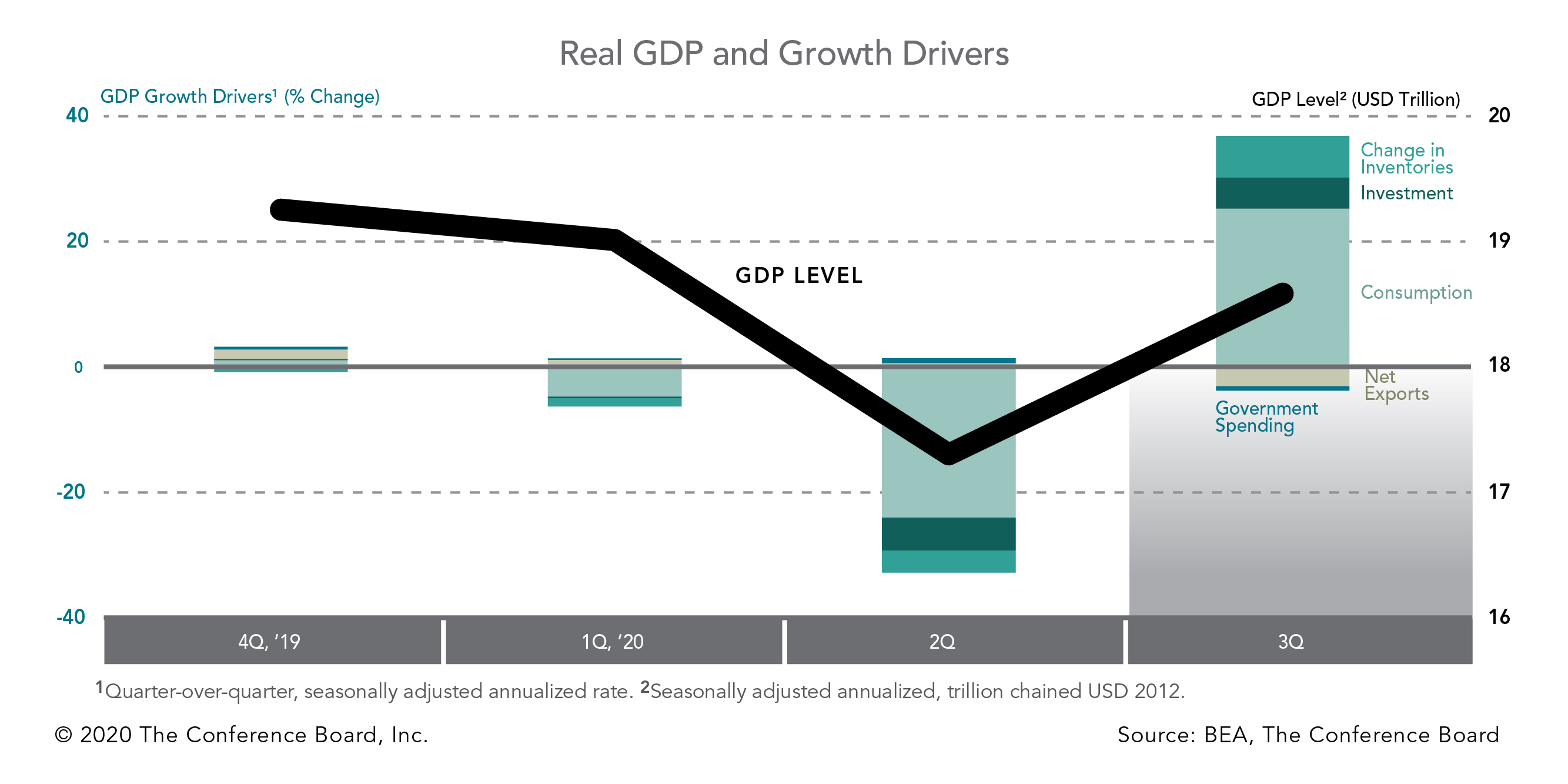|
US real gross domestic product (GDP)
expanded by 33.1 percent (annualized) during the third quarter of 2020,
following a 31.4 percent contraction in Q2. While this was the largest
quarterly growth rate on record, the US economy remains 3.5 percent smaller
than it was prior to the pandemic in Q4 2019.
Third quarter GDP growth was driven primarily by a large rebound in
consumption and stronger inventories and investment. While consumption was
the largest contributor to overall growth this quarter, it remains
approximately $436 bln below its Q4 2019 level (about 3.3 percent lower).
Although spending on goods (many of which are imported) exceeded prepandemic
levels, the strength was more than offset by a deterioration in spending on
services, which are mostly produced domestically. Inventories, which fell
sharply in the second quarter, improved in Q3 and contributed seven
percentage points to overall GDP growth. Investment activities also helped Q3
growth. Residential investment exceeded Q4 2019 levels by $31.3 bln, but
nonresidential investment was still down $136.7 bln. Meanwhile, government
spending and net exports were a drag on growth in Q3. Government spending
fell $38.3 bln, pulling overall GDP growth down by 0.68 percent. An uneven
rebound in export and import growth yielded an annualized trade deficit of
over $1 tln—the largest on record.
Looking ahead, given the resurgence in new COVID-19 cases, the limited
recovery in the labor market, and uncertainty over passage of another fiscal
stimulus package, it is unlikely that economic activity will significantly
improve in Q4 2020. We anticipate incremental growth in the months ahead but
do not expect the US economy to return to a prepandemic level of output until
the second half of 2021.
|

No comments:
Post a Comment